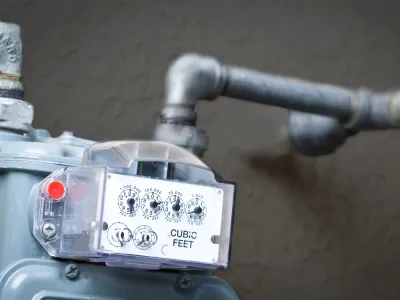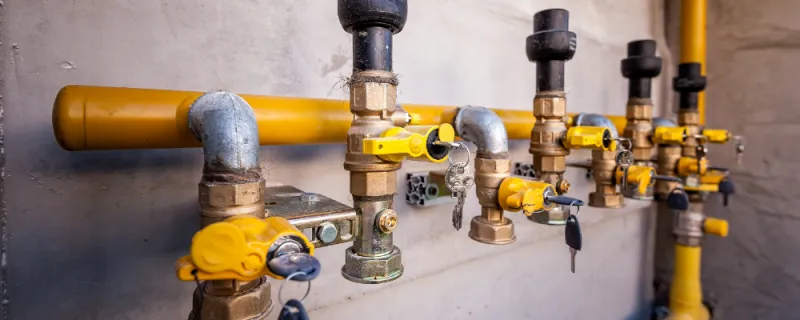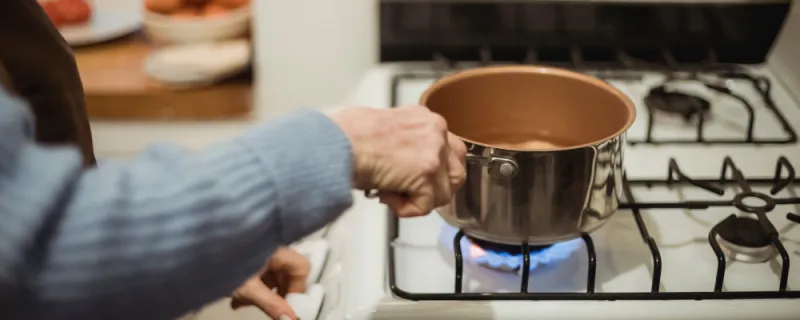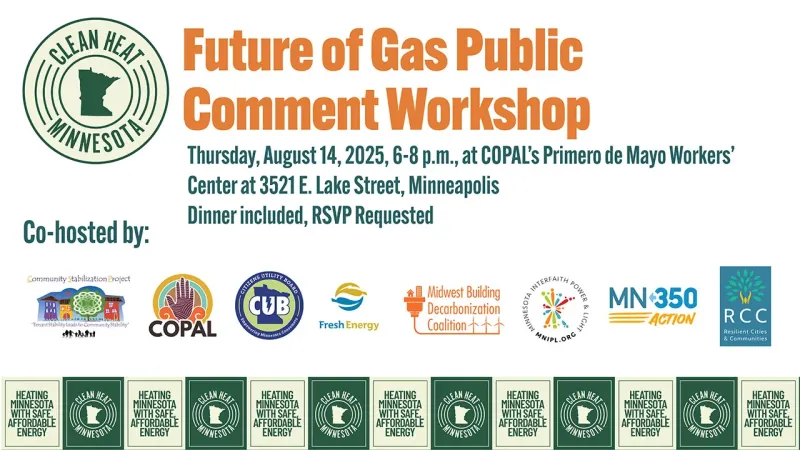Ratepayers should no longer pay for gas utility expansion

The State of Minnesota has a goal of cutting economywide greenhouse gas emissions in half by 2030 and reaching net-zero by 2050. To reach this goal—and to protect ratepayers from financial risks as per-household gas use begins to plateau or decline—we need to rethink the policies that continue to incentivize the use of natural gas in our homes and buildings.
This month, CUB filed comments at the Minnesota Public Utilities Commission (PUC) urging regulators to reevaluate current policies—known as Line Extension Allowances—which charge existing gas customers for the cost of expanding the natural gas system to new customers.
New customers need additional infrastructure to connect to the natural gas system—like gas mains, service pipelines, and meter installation—and the cost of that infrastructure is mostly spread out across all customers. These costs add up to tens of millions of dollars each year, including a profit for the utility that wouldn’t be included if the new customer paid those expenses themselves.
Alongside community organizations, clean energy groups, health professionals and government agencies, CUB recommends elimination of Line Extension Allowances, so we can protect consumers from excessive rate increases, improve home health, and reach Minnesota’s climate goals.
How did we get here?
In 2021, the Minnesota Legislature directed the PUC to initiate a proceeding to evaluate changes to regulated gas utility policy needed to meet or exceed the state’s 2050 greenhouse gas goal. To address that question, the PUC opened the “Future of Gas” docket. The PUC is currently examining what, if any, modifications should be made to utility line extension policies as the first substantive consideration in that docket.
Why do we need to end Line Extension Allowances?
Line Extension Allowances were first approved in the 1990s when natural gas was rapidly expanding in Minnesota. Adding new customers to the system helped spread the cost of gas infrastructure across more people, which kept rates low for all customers. This justification made sense when the gas system was still growing – but now multiple decarbonization pathway analyses show we can't both expand the gas system and reach Minnesota's decarbonization goals in a way that’s affordable. State policy has changed, technology has improved, and our understanding of the health impacts of natural gas use has become clearer.

We should protect gas customers from the financial risk of continuing to expand the gas system.
As building efficiency and electric options for heating, cooling, and cooking become more affordable and accessible, gas sales are likely to decline. Rates, in turn, will have to increase in order to pay off today’s investments in new pipes and other infrastructure.
This increase in gas rates will motivate even more households to invest in energy efficiency and electrify their home energy use. But many gas customers, particularly renters and low-income homeowners, may not have the means or the ability to transition their homes. These customers are likely to bear the brunt of rate increases.
Customers typically pay for the cost of utility infrastructure over the course of decades, with the utility earning a handsome return on their investment over that time period. For example, according to one analysis, the average cost to connect a customer to CenterPoint Energy’s gas system in 2021 was $2,606. However, over a 40-year recovery period, the utility would earn an additional return of $4,179, paid for by its customers on top of the initial investment.
Allowing utilities to charge ratepayers to expand their service to new customers places ratepayers on the hook for millions of dollars of additional capital investments—and utility profits—each year. Minnesota should end Line Extension Allowances to reduce the risk of future rate increases which will disproportionately impact renters and low-income households who won’t be able to rapidly transition away from gas.
We should focus on improving Minnesota’s health and well-being.
We know that using gas cooking appliances contributes to increased levels of indoor air pollutants, like carbon monoxide, methane, and nitrogen. Even when turned off, gas stoves can leak high levels of methane and nitrogen oxides.
Prolonged exposure to any of these pollutants can lead to higher rates of asthma, heart disease, and cancer. Benzene, a carcinogen emitted by burning gas, can cause blood cancers, including childhood leukemia. Carbon monoxide is lethal in indoor spaces.
Proper ventilation in the home can mitigate some of these impacts, but not enough to completely eliminate the risk. Many households, particularly renters in small apartments, don’t have access to the appliances needed to provide adequate ventilation.
Continuing to encourage gas use will perpetuate these harms, whereas transitioning to electric alternatives can improve Minnesotans’ home air quality and health. Comments submitted by COPAL, Ayada Leads, Health Professionals for a Healthy Climate (HPHC), and Dr. Curt Nordgaard go in-depth on the health impacts of continued Line Extension Allowances.

We should keep working towards Minnesota’s robust climate goals.
Line Extension Allowances incentivize gas utilities to expand emissions-intensive infrastructure at the expense of ratepayers and our climate. This directly undermines Minnesota’s climate goals and redirects money that could otherwise be invested in improving home efficiency and reducing energy usage.
Minnesota has enacted new laws in recent years that signal a shifting policy landscape towards decarbonization. For example, the Natural Gas Innovation Act (NGIA) encourages gas utilities to pilot potential decarbonization strategies and low-carbon fuel alternatives to reduce emissions and lower natural gas usage. Changes to the state’s Energy Conservation and Optimization Act (ECO) have also expanded electrification programs to reduce upfront costs and better support customers to make the switch away from natural gas. Line Extension Allowances are incompatible with these state policies and hinder Minnesota’s progress towards a healthier climate.
What do opponents think?
Some parties, including gas utilities, assert there is no need to revise current line extension policies, primarily pointing to Minnesota’s historic reliance on gas to heat homes during the coldest winter days. However, improvements in home efficiency, advances in heat pump technology, and effective electric space heating rates make building all-electric homes in Minnesota a viable and realistic option.
Importantly, even if Line Extension Allowances are eliminated, new customers can still join the gas system. The new customers will just cover the cost of extending gas service to their buildings themselves, rather than shifting those costs to other customers.
Opponents' arguments fail to address the cost impacts of expanding their systems as gas sales decline. As long as Line Extension Allowances remain in place, utilities will continue to profit from expanding a system that creates financial risks, causes health issues, and undermines Minnesota's climate objectives.
Submit your own comment today.
The comment period for Line Extension Allowances is open until September 9, and the PUC wants to hear from you. Email your comment to consumer.puc@state.mn.us by 4:30 pm on September 9. Be sure to reference PUC Docket Number 21-565, and know that everything included in your comment will become part of the public record. Take a look at CUB’s tips to craft an effective comment.

Interested in learning more first? Alongside the Clean Heat Minnesota Coalition, CUB is co-hosting an in-person comment writing workshop about Line Extension Allowances on August 14. Join us to learn from regulatory experts and ask questions about the Future of Gas docket. Dinner will be provided. Register below.